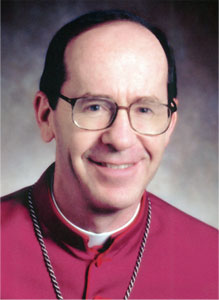A few days ago, columnist Sandro Magister reported on a conference talk given in Rome in December, in which the patristic theologian Bishop Athanasius Schneider proposed a way to promote the Holy Father’s “hermeneutic of continuity”: a papal document to correct erroneous interpretations of the documents of Vatican II, and clarify the intentions of the Council Fathers and Popes Paul VI and John XXIII.
Here’s a thumbnail summary of the talk:
Expounding a key passage from Sacrosanctum Concilium, Bp. Schneider develops seven essential points for building a true theology of pastoral care, in seven duties:
1. to proclaim the Gospel to all non-believers
2. to proclaim the faith to the faithful
3. to preach repentance to the faithful
4. to prepare the faithful for the sacraments
5. to teach the faithful all the commandments of God
6. to promote the apostolate of the lay faithful
7. to promote the vocation of all to holiness
This, the Bishop declares, is the real spirit (mens) of the Council and the real purpose of the Council, and rooted in the Church’s perennial tradition. He supports this theme with extensive quotations from the speeches of Pope Paul VI and Pope John XXIII at the Council.
He goes on to discuss modern errors (liberation theology, liturgical distortions), and suggest two needs in the Church to bring about reform:
- a document from the Pope to present authoritative interpretations of the Council, in continuity with tradition, and against theories of rupture between the Council and the Tradition
- courageous pastors who will carry out the pastoral mission defined by the Council.
I’ve translated the full text, which follows.

 To borrow a term from Mark Shea, an “episcopal spine alert” is the event that happens when a local bishop stands up for authentic faith and morals, or otherwise shows evidence that he has a functioning backbone.
To borrow a term from Mark Shea, an “episcopal spine alert” is the event that happens when a local bishop stands up for authentic faith and morals, or otherwise shows evidence that he has a functioning backbone.